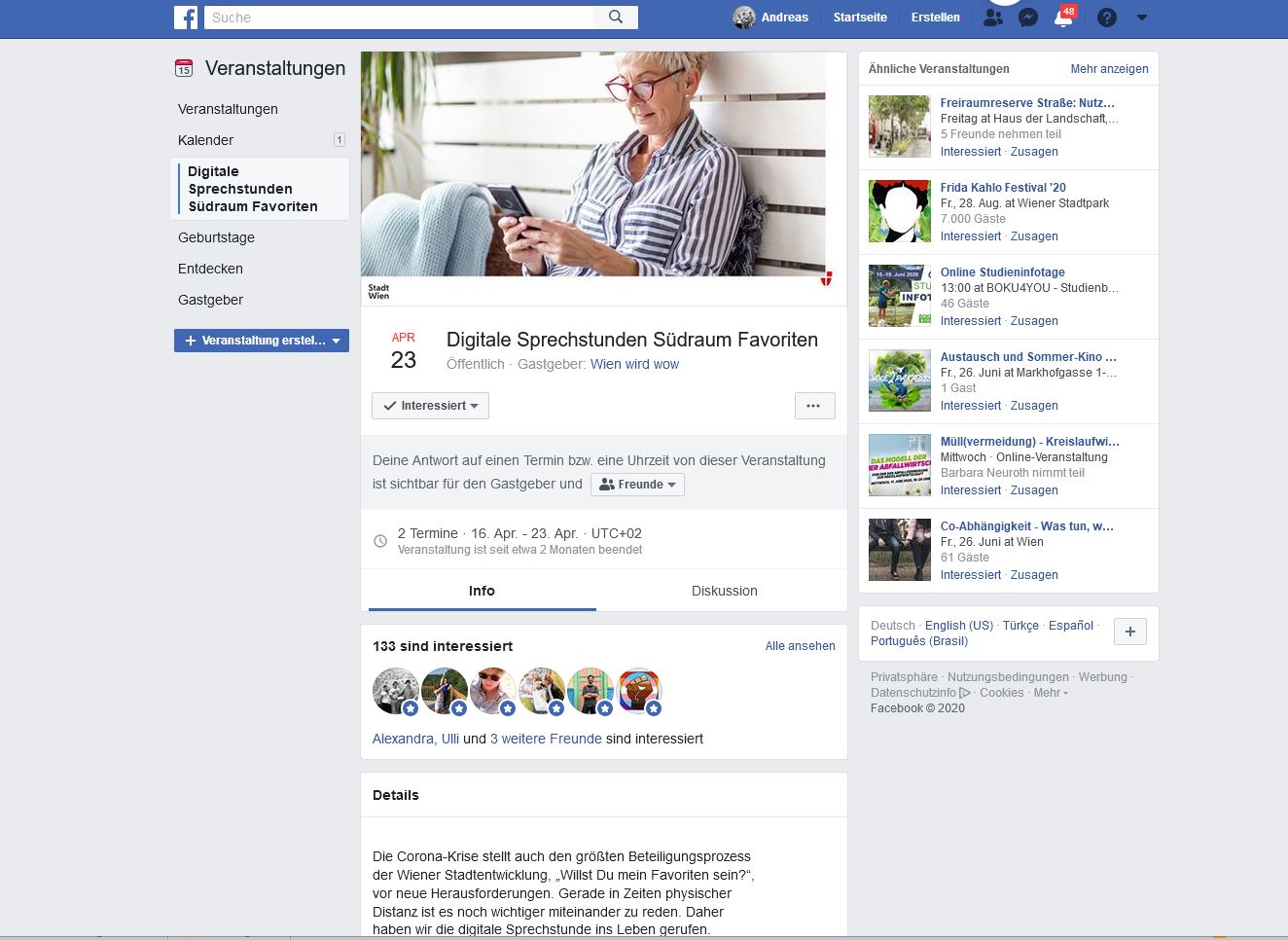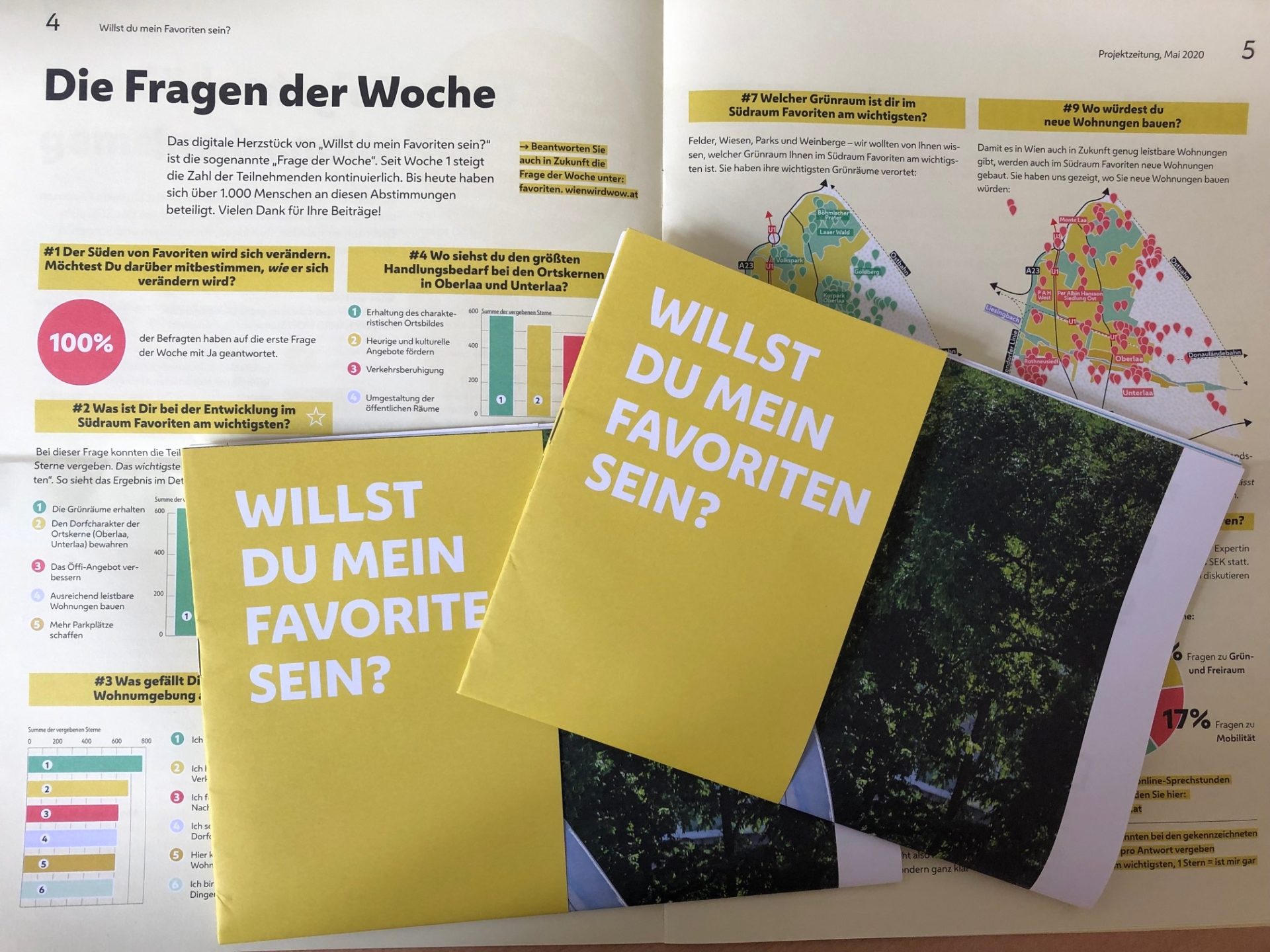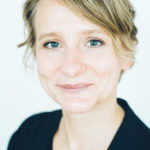Vienna provides inclusive participatory tools. New neighborhood development processes reach out to the people. Vienna has achieved the status of being a forerunner for proactive participation. We have interviewed Wencke Hertzsch, advisor on strategic participation of the City of Vienna to the Executive Group for Construction and Technology, on how the current situation is and how experimental tools aim at maintaining participation. How do cities deal with necessary shifts into digital formats in the near future?
Since many years, the City of Vienna began to actively and proactively involve people in decision-making processes at the neighbourhood level. How can this development up to the beginning of the Covid-19 pandemic be outlined?
Wencke Hertzsch: First of all: Luckily, participation in Vienna is part of strategic guidelines as well as part of guidelines for hands on implementation from the Smart City Wien Framework Strategy or the Urban Development Strategy up to the “Praxisbuch Partizipation” or the „Masterplan for Participatory Urban Development“ (see below).
On the level of implementation participation in Vienna, as in many other cities, has many faces and encompasses strategic issues up to concrete re-design- and transformation projects in public space, neighborhoods or at district level. For many years/decades Vienna has been pursuing the path of on-site work in various thematic focuses and participation models. The central pivot of continuous on-site participation are municipal institutions such as Gebietsbetreuungen (area management) in urban renewal areas, Stadtteilmanagements (neighbourhood management) in new urban development areas, Local Agenda processes in 11 districts, wohnpartner (residential partners) in the field of social housing as well as Parkbetreuung (park management) and mobile youth work.

„Masterplan for Participatory Urban Development“
Wencke Hertzsch: In addition, projects in the context of urban development and urban planning are examined according to the guidelines of the „Masterplan for Participatory Urban Development“ and participation is implemented accordingly. Here, the requirement is to enter into a direct and clear dialogue with different target groups at an early stage.
As with every participation project, Vienna also clarifies at an early stage: On which topic should participation take place? Who should be involved? What methods and formats can we use to reach our target groups? How do we deal with the results? For the common understanding of participation and a general overview of analogue methods of participation, the “Praxisbuch Partizipation” was developed. In addition, a digital participation platform has been available since 2015 (Link).

What are formal and informal tools for involving local people in Vienna?
Wencke Hertzsch: Here I would like to focus on the topic of urban development and urban planning, which in Vienna is the responsibility of the municipal department 21A/B. Formally, the involvement of people is regulated by the public circulation of zoning plans and the possibility for everyone to take a stand on this. These plans are available for online inspection and/or for a personal inspection in the ”Servicestelle Stadtentwicklung”, and are supervised by the staff of the City of Vienna
Informal participation is regulated by the above-mentioned master plan, which defines binding ‚must‘ and ‚can‘ criteria. A classical format in this context must be imagined as a kind of on-site exhibition, where important planning goals and steps as well as thematic consolidation are presented and where open questions can be discussed in accompanying discussion and consolidation workshops. The results are documented and prepared for the further process.
How have the restrictions imposed by Covid-19 influenced these processes? And what have you done to ensure participation?
Wencke Hertzsch: Here, too, in relation to processes of urban development, the Covid-19 restrictions naturally led to adjustments to established procedures and the short-term suspension of events, for example, the public requirement had to be suspended for a period of time. In the area of informal participation, too, attendance appointments were cancelled, but even at the beginning of the restrictions, alternatives for public participation were actively worked on and implemented.
In one case, for example, inspections and discussions in public spaces were planned with a so-called „dialogue bicycle“, which could no longer be carried out due to the ban on events and meetings. Here, on the one hand, a shift to digital space and social media has taken place through the implementation of a digital consultation hour on Facebook. On the other hand, we have decided to bring together all content in a “project newspaper” as a hard copy and to provide all households concerned with it. Via the possibility of a reply card, it is also possible to comment on the content and send it back to the City of Vienna. For the sake of completeness, however, it should be mentioned that this project was planned cross-medially from the very beginning. This also made it possible to react quickly to the changed conditions.

What is your experience of using digital instruments to adapt these participation formats and continue the processes? Do you think it will become more analogue or digital in the future? What are your assessments?
Wencke Hertzsch: First and foremost, the change in the way we work within the municipal administration through home office, telephone and video conferences, etc. has brought digital and uninterrupted media-based working to the forefront in the own practice of many colleagues and thus also had a positive effect on the topic of digital participation. Of course, participation projects were already being implemented digitally and/or cross-medially before Covid-19, but as described at the beginning, we in Vienna attach great importance to personal and on-site dialogue regarding to urban development projects.
Digitalisation should help us to improve communication and participation (e.g. in the accessibility of target groups or in transparency), but it cannot and should not replace analogue elements. In this respect, not every participation process can be pushed into the digital space without replacement, because here too the question of quality and above all the question of accessibility of target groups arises.
We do not reach everyone here and there, but always only a section. The mix of different approaches, methods and formats is important in order to reach as many as possible. In this respect, the future of participation does not lie in digital space, but in a cross-media approach, even if we are still affected by restrictions in the area of personal contacts and beyond. As already mentioned above, we are trying this cross-media approach from the very beginning and even in the times of Covid-19 we are supplementing digital elements with analogue ones, such as project newspapers, mailings, reply cards, etc. Currently, exhibitions and discussions in public space are also being planned again.
